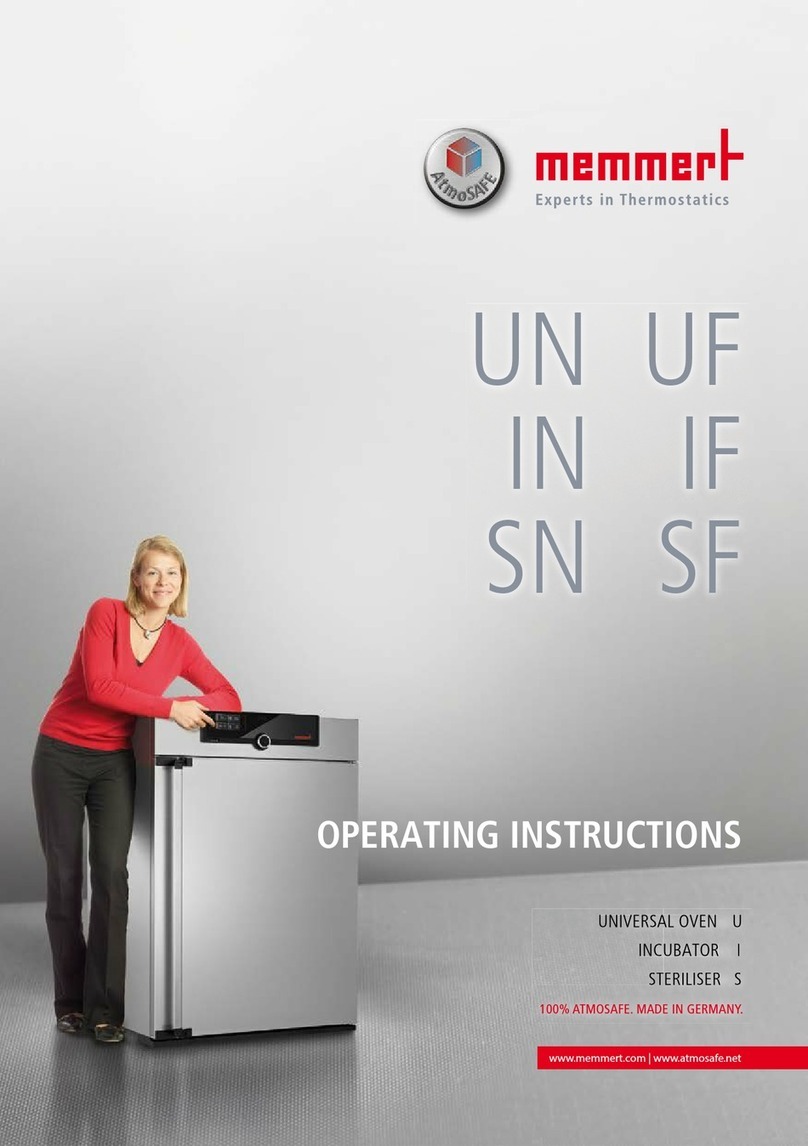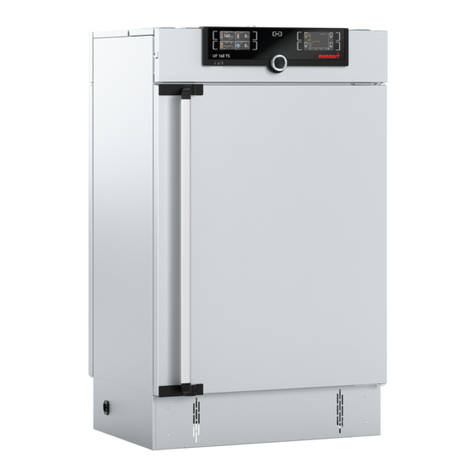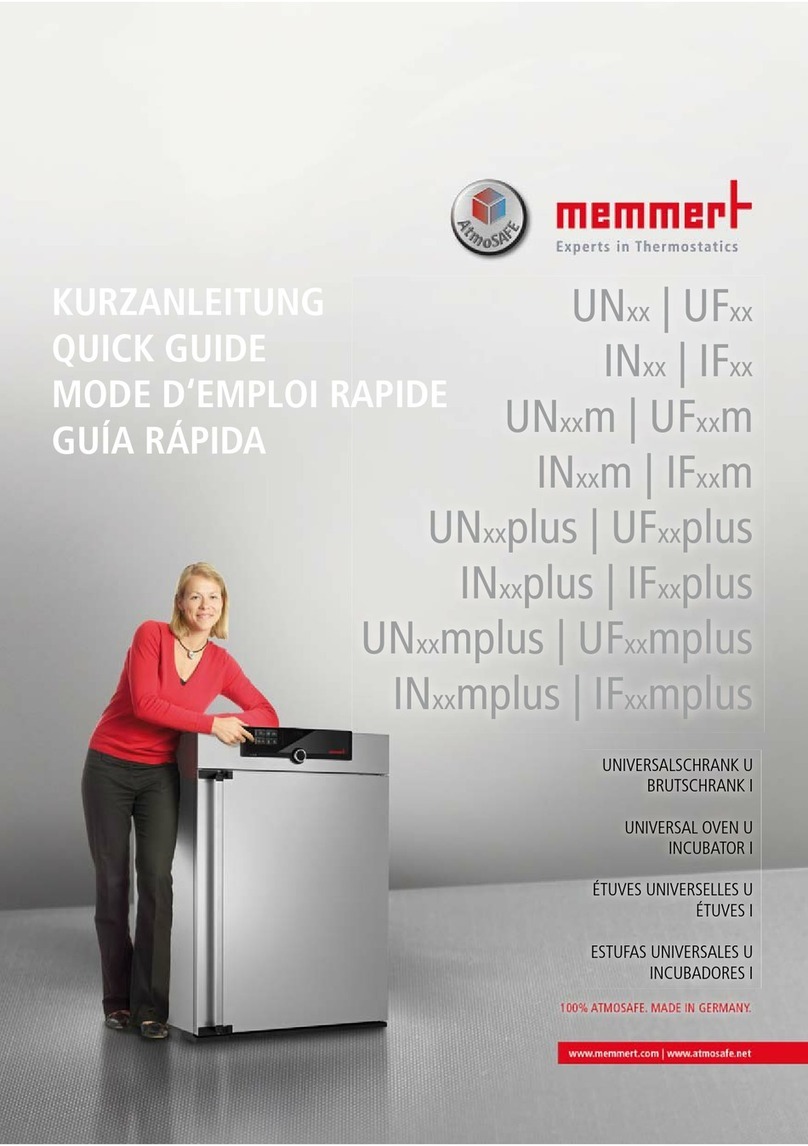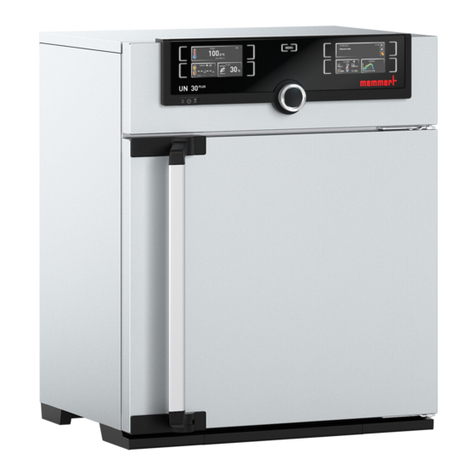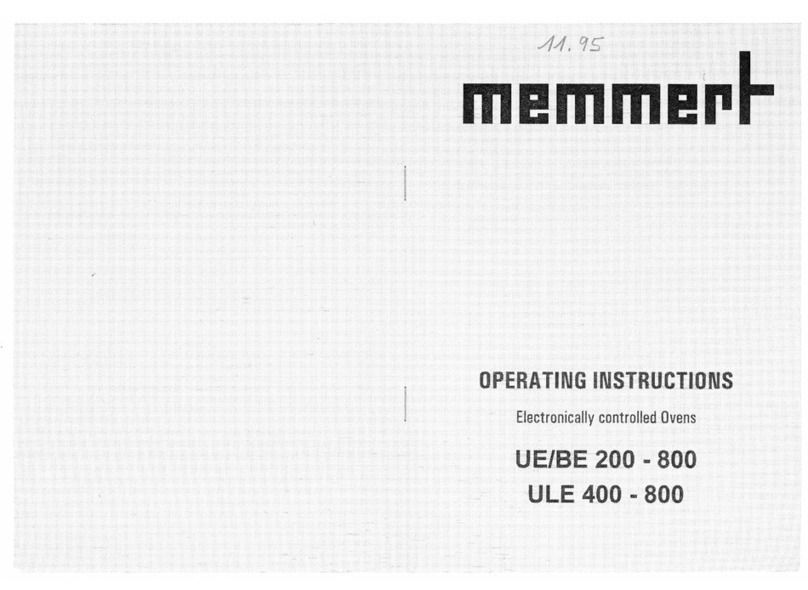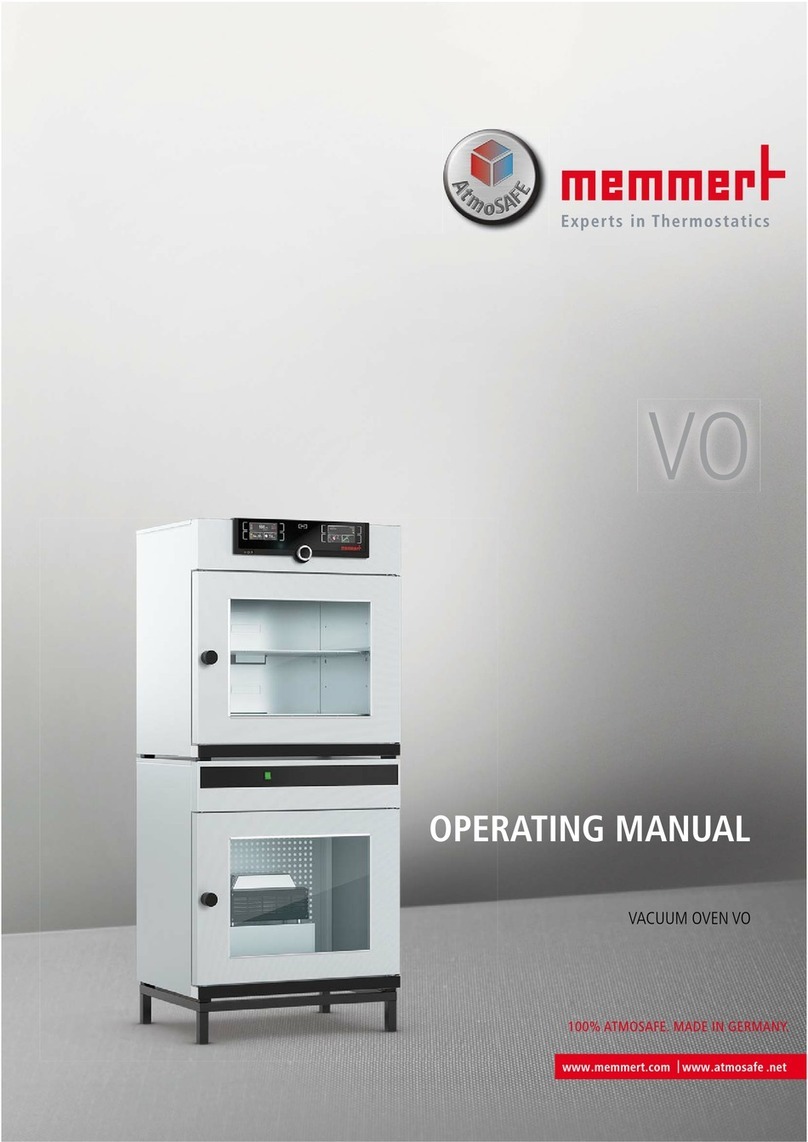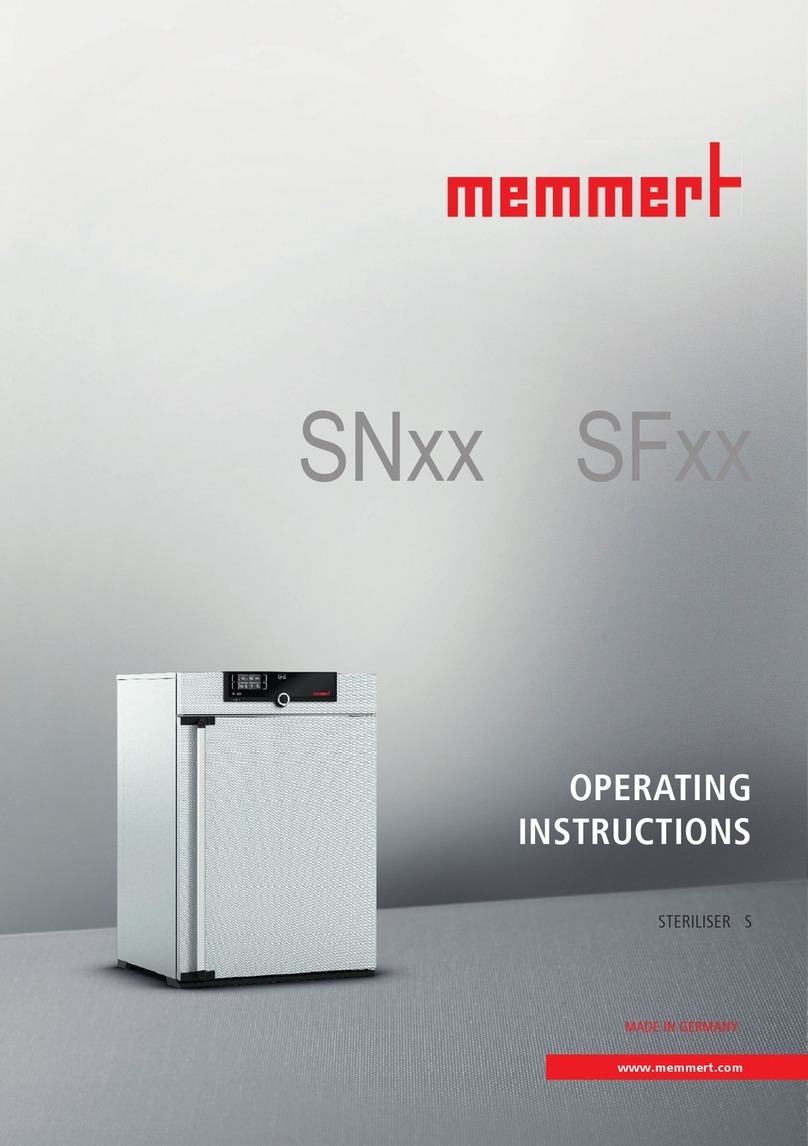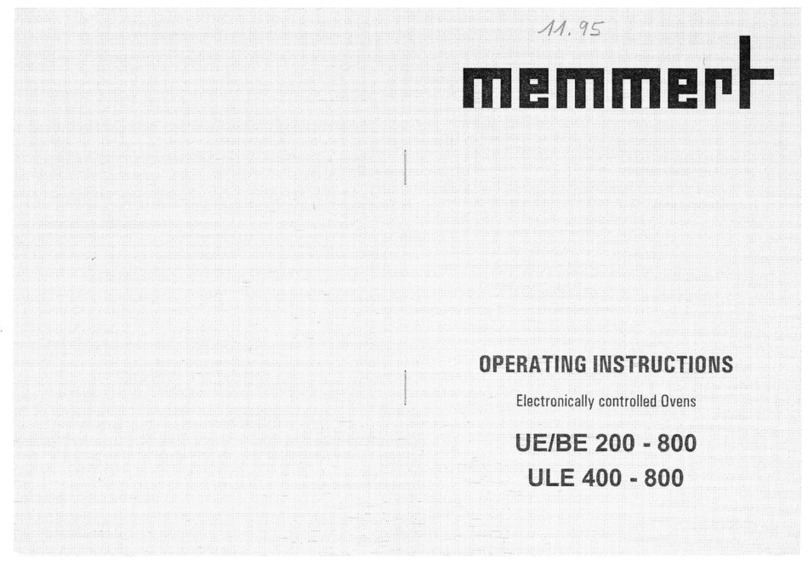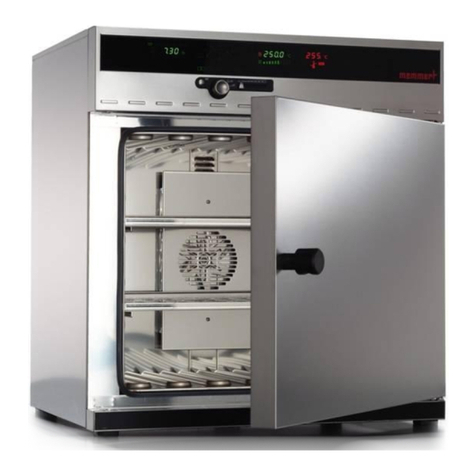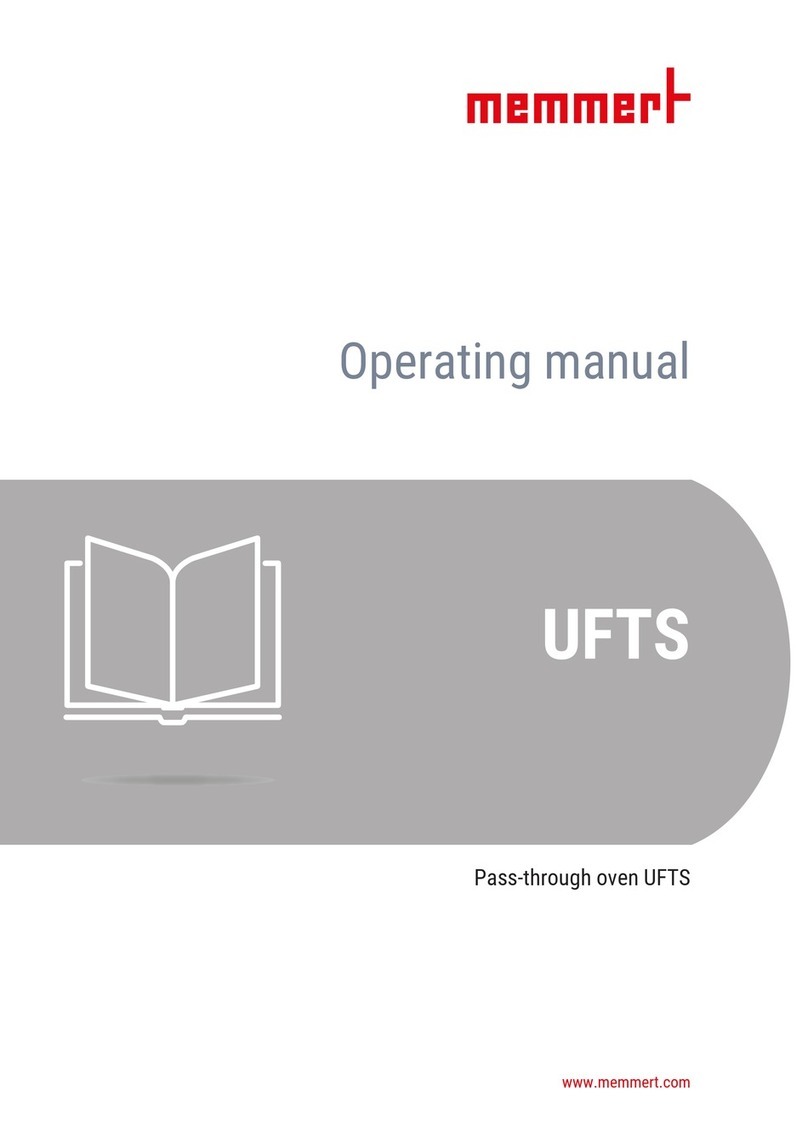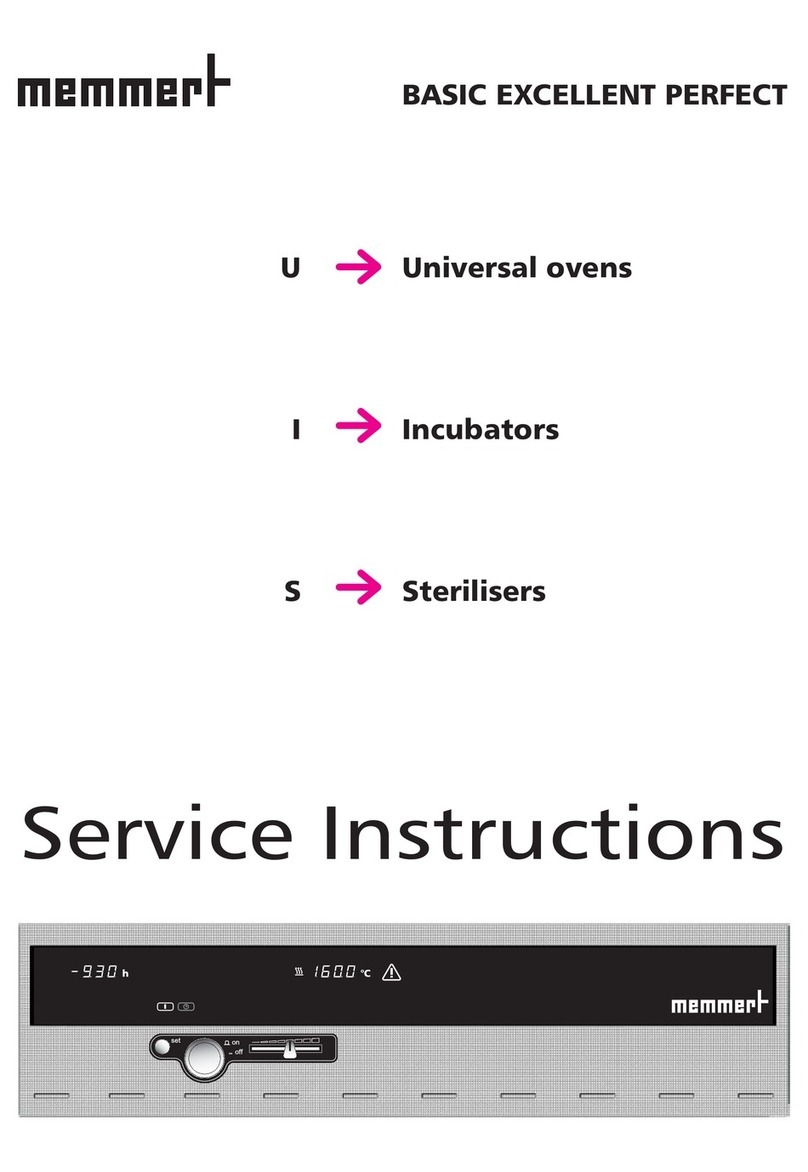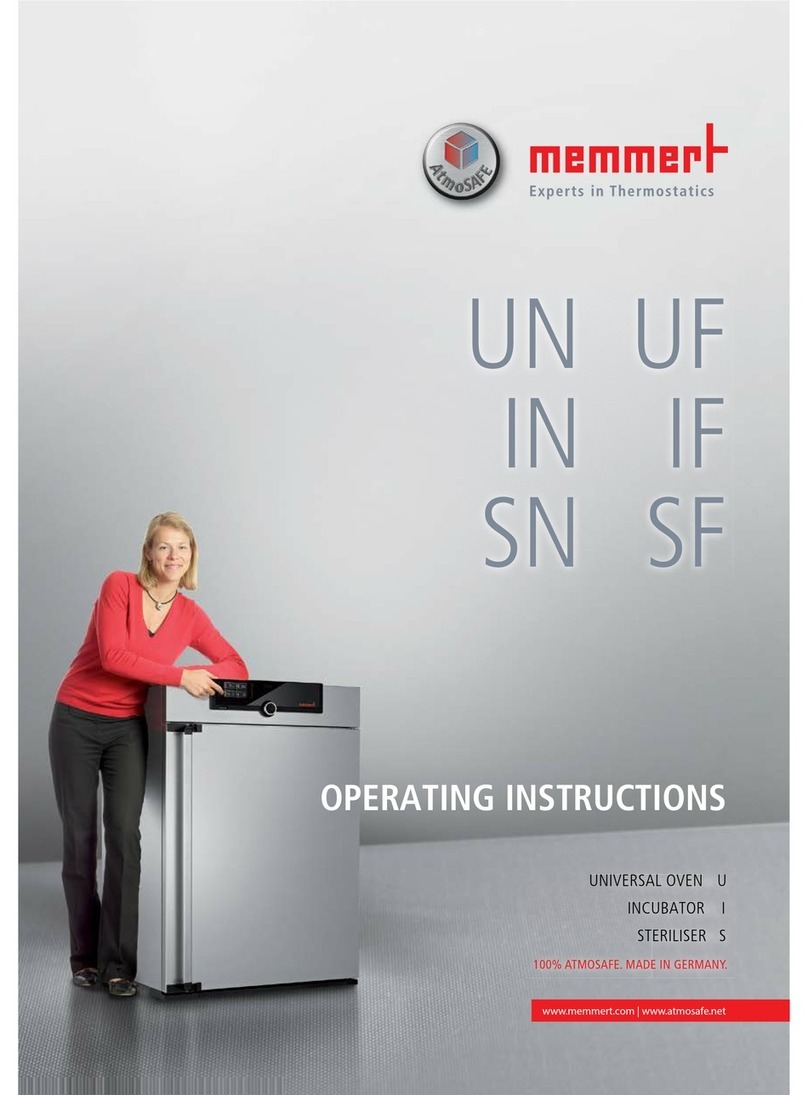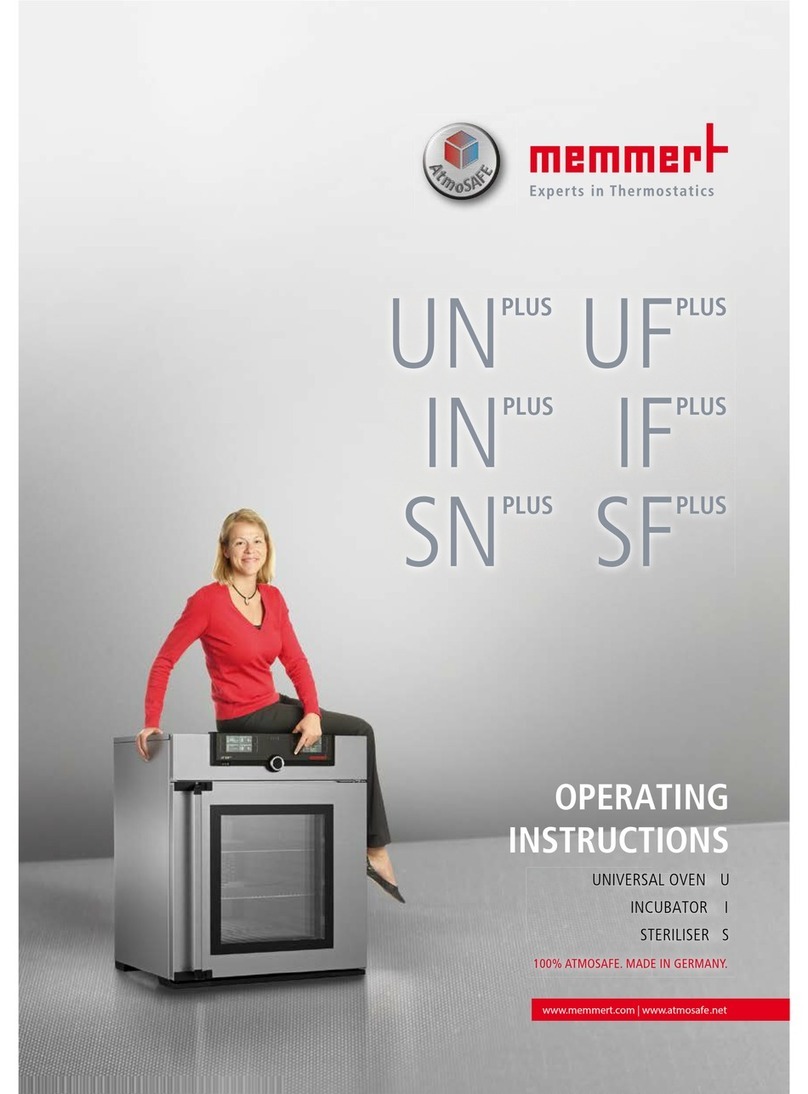PERFECT page 2
1. Contents
1. Contents......................................................................................................................................................................2
2. General notes and safety notes ....................................................................................................................................4
2.1 Material quality from MEMMERT:.......................................................................................................................4
2.2 Transport ...........................................................................................................................................................5
2.3 Initial start-up....................................................................................................................................................5
2.4 Oven load..........................................................................................................................................................5
2.5 Safety check ......................................................................................................................................................5
3. Technical data..............................................................................................................................................................6
3.1 Standard equipment of VO-ovens ......................................................................................................................7
3.2 Electrical equipment ..........................................................................................................................................8
3.3 External connection ...........................................................................................................................................8
4. Installation facilities (accessories)..................................................................................................................................9
4.1 Subframe...........................................................................................................................................................9
4.2 Stackable version ...............................................................................................................................................9
5. Oven construction and connections............................................................................................................................10
6. Starting up ................................................................................................................................................................12
7. Switching output for external vacuum pump purge valve and pump control...............................................................13
7.1 Vacuum pump purge valve ..............................................................................................................................13
7.2 Demand-controlled vacuum pump shut-down .................................................................................................13
8. Loading and Inertgas .................................................................................................................................................14
9. Guidelines for evaporating liquids in Memmert-vacuum ovens....................................................................................15
10. Controls and indications.............................................................................................................................................16
11. Operating the door....................................................................................................................................................16
12. Switching on .............................................................................................................................................................16
13. Setting the temperature.............................................................................................................................................16
14. Quick venting function...............................................................................................................................................17
15. Status indication for the heating levels .......................................................................................................................17
16. Selecting the operating mode ....................................................................................................................................18
17. Setting the parameters............................................................................................................................................... 18
18. Normal operation ............................................................................................................................................19
Setting example “Normal operation“..........................................................................................................................20
19. Weekly programmer ........................................................................................................................................21
Programming example “Weekly programmer“............................................................................................................22
20. Programme operation ......................................................................................................................................23
20.1 Closure commands for ramp segments ............................................................................................................25
Programming example programme operation ............................................................................................................26
21. Printer
PRINT .............................................................................................................................................................29
22. Basic oven settings SETUP ...........................................................................................................................................30
22.1 Real-time clock ................................................................................................................................................31
